Taoiseach of Caldia
| Taoiseach of Glytter | |
|---|---|
| Style | Your Excellency (A Shoilse) |
| Residence | Loveland House |
| Nominator | Comhthionól Náisiúnta |
| Appointer | Monarch of the Glytter by convention, based on appointee's ability to command confidence in the Comhthionól Náisiúnta. |
| Term length | At His Majesty's pleasure, so long as elections are held no more than five years apart. |
| Inaugural holder | Dónall Ó Conaill |
| Formation | 1857 |
| Deputy | Tánaiste |
| Salary | €185,350 |
| Website | taoiseach.gl |
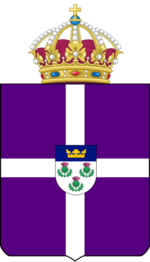 |
|---|
| This article is part of a series on the politics and government of Caldia |
|
|
The Taoiseach is the head of government or prime minister of Glytter. The Taoiseach is appointed by the Monarch upon the nomination of Comhthionól Náisiúnta, the lower house of the Royal Congress, and must, in order to remain in office, retain the support of a majority in the Comhthionól. The current Taoiseach is Humphrey Dumfries, TC, who was appointed on 5 January 2019.
The word means "chief" in the Ghaillish language. The earliest known use of the term is from a 5th- or 6th-century ogham inscription in both the Tenic languages.
Overview
Under the Constitution of Glytter, the Taoiseach is nominated by a simple majority of Comhthionól Náisiúnta from among its members. He or she is then formally appointed to office by the Monarch, who is required to appoint whomever the Comhthionól designates without the option of declining appointment.
If the Taoiseach loses the support of a majority in Comhthionól Náisiúnta, he is not automatically removed from office but, rather, is compelled to either resign or persuade the Monarch to dissolve the Comhthionól. The Monarch may refuse to grant a dissolution and, in effect, force the Taoiseach to resign, but, to date, no Monarch has exercised this prerogative, though the option has arisen. The Taoiseach may lose the support of Comhthionól Náisiúnta by the passage of a vote of no confidence, the failure of a vote of confidence or, alternatively, the Comhthionól may refuse supply. In the event of the Taoiseach's resignation, he or she continues to exercise the duties and functions of his or her office until the appointment of a successor.
The Taoiseach nominates the remaining members of the Government, who are then, with the consent of the Comhthionól, appointed by the Monarch. The Taoiseach also has authority to advise the Monarch to dismiss cabinet ministers from office, advice the Monarch is required to follow by convention. The Taoiseach is further responsible for appointing eleven members of the Seanad.
The Executive Bureau is the government department which supports and advises the Taoiseach in carrying out his or her various duties through the Taoiseach's Office.
Taoiseachs are also members of the Council of State, where they serve from their ascension to the office until their death.
History
The position of Taoiseach was created in 1857 under the Instrument for Governance Act of 1857. Following the Silent Revolution and the demand for greater political representation, the creation of the Comhthionól Náisiúnta would result in the demand for the post. King Elton I and the Seanad both approved of its creation.
The creation of the office would remove considerable authority from the Seanad, and as such made the principal house of the Royal Congress.
The office was predeceased by the Laird Chancellor. Under the Constitution of Glytter, executive authority was held by the monarch, who would often delegate such authority to the Laird Chancellor. The position of Laird Chancellor has its earliest roots in the thirteenth century during the reforms of King Alastar. The creation of the Chamber of Lairds in the seventeenth century limited the powers of the monarch and in turn the Laird Chancellor. However, both the monarch and the Laird Chancellor retained significant authority. The Laird Chancellorship was almost always held by peer or bishop. The only Taoiseach who was a peer during their tenure was the Duke of Holyhead.
The first Taoiseach was Dónall Ó Conaill, a former Laird Chancellor, former senator and prominent reformer. He was a principal leader of the Silent Revolution. Ó Conaill was a member of and the leader of the Glytter Democrats, the party which heavily campaigned for the creation of a more democratised house. Ó Conaill would serve two terms as Taoiseach, with the first lasting from 1857-1862 and the second from 1867-1872.
Since the office's creation, there have been twenty-seven Taoiseachs from four political parties. All but four Taoiseachs have served for the full duration of their five-year terms. Conán Ó Faoláin is the only Taoiseach to have died while in office while Liam Mahoney failed to defeat a motion of no confidence. Taoiseachs Brigid O'Reilly and Rory McAllan are the only Taoiseachs who have both been in power during snap election and to have had their parties defeated in a snap election.
The Instrument for Governance Act of 1965 removed virtually all powers from the Seanad. As a result, the power of the Taoiseach increased significantly as they no longer had to cooperate with the Cathaoirleach to ensure their legislation would pass the Seanad. The need for reform arose following the Government Crisis of 1965 in which the majority of elected Seanad seats were held by the Liberty Party. As a result the Cathaoirleach, Dónal Ó Loingsigh, was a member of the Liberty Party. He used his seat to delay major reforms pursued by Taoiseach Mary O'Neill by refusing to put them up for a vote. Instead of calling for a snap election or waiting for the 1966 Seanad election, O'Neill instead pushed to strip the upper house of the bulk of its powers. The Instrument for Governance Act of 1965 was passed with a two-thirds super majority after negotiations between the parties sitting in the Comhthionól. After her reforms were implemented, the Taoiseach was granted the power to appoint eleven senators, an increase from the five previously permitted. This is done in order to ensure the government has a majority in the Seanad, which now only has the powers to review and delay legislation.
Family
The family of the Taoiseach has no official title or role. However, family members are often identified as members of the Dara Teaghlaigh (Second Family) in the Glytteronian press. This is due to their secondary status to the Royal Family. It is in reference to the tradition of calling members of the presidential family of the Federation the First Family. The phrase Dara Teaghlaigh first became popular in the 1970s and has since remained.
Residence
The official residence of the Taoiseach, the Loveland House. The residence is located on the Royal Mile in Spálgleann.
List of office holders
Parties
| No. | Name (Birth–Death) |
Portrait | Party | Term of office | Last office held before election | Monarch | |
|---|---|---|---|---|---|---|---|
| 1 | Dónall Ó Conaill (TBD) |
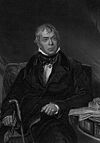
|
Glytter Democrats | 12 June 1857 |
12 June 1862 |
Laird Chancellor | Elton I |
| 2 | Patrick Haughey (TBD) |
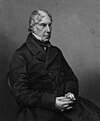
|
National Conservative Party | 12 June 1862 |
12 June 1867 |
Leader of His Majesty's Most Loyal Opposition | Elton I |
| 1 | Dónall Ó Conaill (TBD) |

|
Glytter Democrats | 12 June 1867 |
12 June 1872 |
TBD | Elton I |
| 3 | Brian Quinn (TBD) |

|
National Conservative Party | 12 June 1872 |
12 June 1877 |
TBD | Elton I |
| 4 | Maureen Guinness (TBD) |

|
Glytter Democrats | 12 June 1877 |
12 June 1882 |
TBD | Elton I Mary IV |
| 5 | Donagh McCarthy (TBD) |

|
National Conservative Party | 12 June 1882 |
21 April 1885 |
TBD | Mary IV |
| 6 | Robert MacDouglas (TBD) |

|
National Conservative Party | 21 April 1885 |
12 June 1887 |
TBD | Mary IV |
| 7 | Eamon Brady (TBD) |

|
Glytter Democrats | 12 June 1887 |
12 June 1897 |
TBD | Mary IV |
| 8 | Elizabeth Higgins (TBD) |

|
National Conservative Party | 12 June 1897 |
12 June 1902 |
TBD | Mary IV |
| 9 | Conán Ó Faoláin (TBD) |

|
Glytter Democrats | 12 June 1902 |
8 April 1906 |
TBD | Mary IV |
| 10 | Leonard McGarry (TBD) |
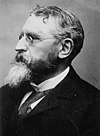
|
National Conservative Party | 8 April 1906 |
12 June 1912 |
TBD | Mary IV |
| 11 | Saorla Ní Chonaill (TBD) |

|
Glytter Democrats | 12 June 1912 |
12 June 1917 |
TBD | Mary IV |
| 12 | Brigid O'Reilly (TBD) |

|
National Conservative Party | 12 June 1917 |
4 September 1919 |
TBD | Mary IV |
| 13 | Liam Mahoney (TBD) |

|
Glytter Democrats | 4 September 1919 |
29 November 1925 |
TBD | Mary IV |
| 14 | Éamon Ua Buachalla (TBD) |

|
Glytter Democrats | 29 November 1925 |
1 February 1935 |
TBD | Mary IV Ellen II |
| 15 | Tomás Mag Fhearadhaigh (TBD) |

|
Social Democratic | 1 February 1935 |
12 June 1937 |
TBD | Ellen II |
| 16 | Eleanore Rosaiteir 11 October 1893-26 November 1961 |
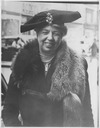
|
Liberty Party | 12 June 1937 |
12 June 1952 |
TBD | Ellen II |
| 17 | Seamus Macaulay (TBD) |
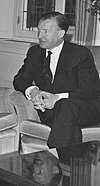
|
Social Democratic | 12 June 1952 |
12 June 1957 |
TBD | Ellen II |
| 18 | Wallace P. Fitzgerald, Sr. (TBD) |

|
Liberty Party | 12 June 1957 |
12 June 1962 |
TBD | Ellen II |
| 19 | Máire Ní Néill (TBD) |
File:MaryONeil.jpg | Social Democratic | 12 June 1962 |
12 June 1967 |
TBD | Ellen II |
| 20 | Rory McAllan (TBD) |

|
Social Democratic | 12 June 1967 |
21 March 1969 |
TBD | Ellen II |
| 21 | Dáibhí Mac Coinneach (TBD) |

|
Liberty Party | 21 March 1969 |
12 June 1977 |
TBD | Ellen II |
| 22 | Michael Moss (TBD) |

|
Social Democratic | 12 June 1977 |
12 June 1982 |
TBD | Ellen II |
| 23 | Patricia Flowers b. 17 February 1929 |

|
Liberty Party | 12 June 1982 |
12 June 1992 |
TBD | Ellen II |
| 24 | Niamh Nic Uilliam b. 27 February 1949 |

|
Social Democratic | 15 June 1992 |
17 March 2002 |
Leader of His Majesty's Most Loyal Opposition | Ellen II Elton II |
| 25 | Séamus Ó Faoláin b. 8 November 1948 |

|
Social Democratic | 17 March 2002 |
17 June 2002 |
Tánaiste and Minister of the Interior | Elton II |
| 26 | Enda Kelley b. 4 March 1948 |

|
Liberty Party | 18 June 2002 |
17 June 2007 |
Leader of His Majesty's Most Loyal Opposition | Elton II |
| 27 | Alexis Walker b. 15 August 1950 |

|
Liberty Party | 17 June 2007 |
20 April 2017 |
Minister of Foreign Affairs | Elton II Kenneth IV |
| 28 | Jimmy O'Reilly b. 27 April 1976 |

|
Liberty Party | 20 April 2017 |
7 May 2018 |
Minister of Justice and Equality | Kenneth IV |
| 29 | Frank Casarnach b. 5 November 1949 |

|
Liberty Party | 7 May 2018 |
5 January 2019 |
Minister of Foreign Affairs | Kenneth IV |
| 30 | Humphrey Dumfries b. 20 April 1954 |

|
Liberty Party | 5 January 2019 |
Present | Minister of Finance | Kenneth IV |
Living former Taoiseachs
As of 2018 there are six living former Taoiseachs. The last Taoiseach to die was Michael Moss in 2003, who served as Taoiseach from 1977-1982.
Patricia Flowers
served 1982-1992
born 1929 (age 95)Niamh Nic Uilliam
served 1992-2002
born 1949 (age 75)Séamus Ó Faoláin
served 2002-2002
born 1948 (age 76)Enda Kelley
served 2002-2007
born 1948 (age 76)Alexis Walker
served 2007-2017
born 1950 (age 74)Jimmy O'Reilly
served 2017-2018
born 1976 (age 48)








